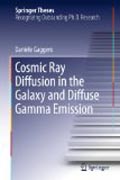
The original work presented in this thesis constitutes an important contribution to modern Cosmic Ray (CR) physics, and comes during one of the most exciting periods of this field. .The first part introduces a new numerical code (DRAGON) to model the CR propagation in our Galaxy. The code is then used to perform a combined analysis of CR data, making it possible to determine their propagation properties with unprecedented accuracy. .The second part is dedicated to a theoretical interpretation of the recent crucial experimental results on cosmic electron and positron spectra (PAMELA, Fermi-LAT experiments). Using the tools developed in the first part of the thesis, the author convincingly argues for the existence of a new spectral component, which could arise either from local astrophysical sources, such as pulsars, or from Dark Matter annihilation or decay. .This thesis is a highly advanced work; the methods, analysis and results are clearly and carefully presented. This work is set to become an important reference document for any future work in this area. INDICE: Introduction.- Cosmic Ray diffusion in the Galaxy.- Numerical codes that solve the CR diffusion equations.- Propagation of CR nuclei: our results.- The leptonic field.- Diffuse gamma ray emission from the Galaxy.- Conclusions and future plans. A The diffusion equation in cylindrical coordinates.- B DRAGON code: a description.- C Solution of the transport equation for a Pulsar-like source.
- ISBN: 978-3-642-29948-3
- Editorial: Springer
- Encuadernacion: Cartoné
- Fecha Publicación: 31/07/2012
- Nº Volúmenes: 1
- Idioma: Inglés
